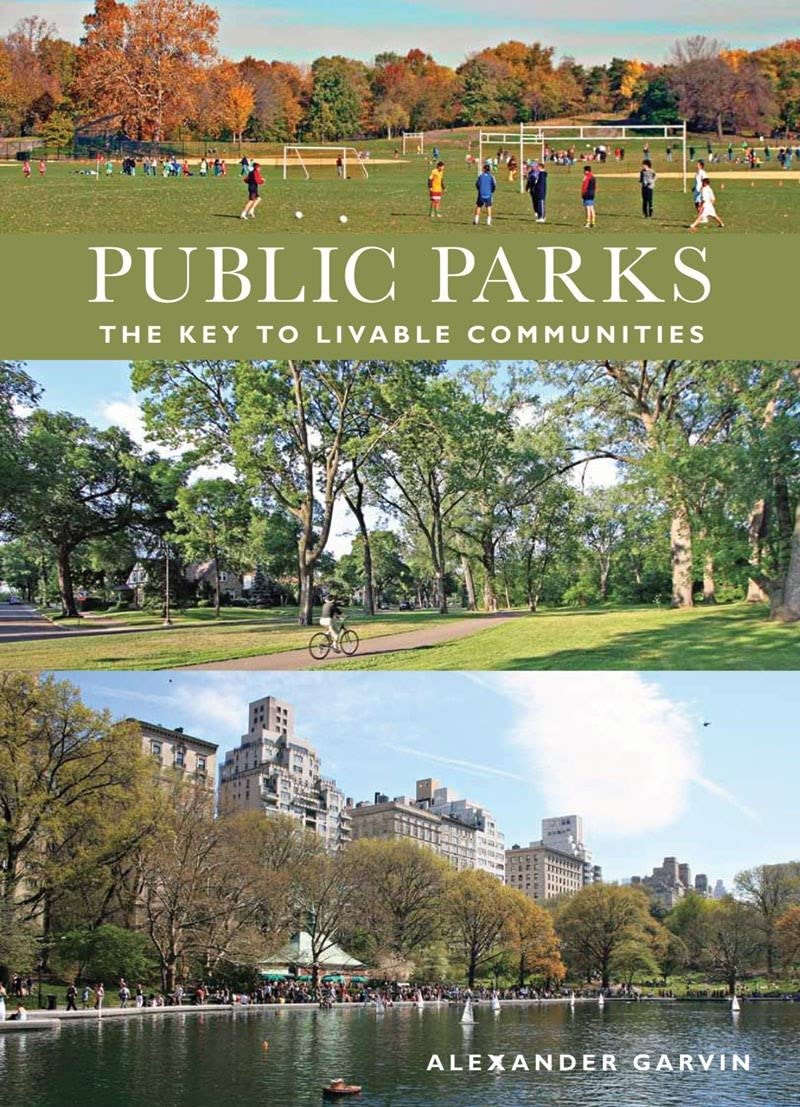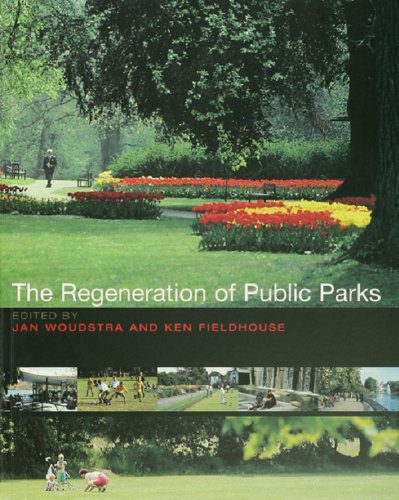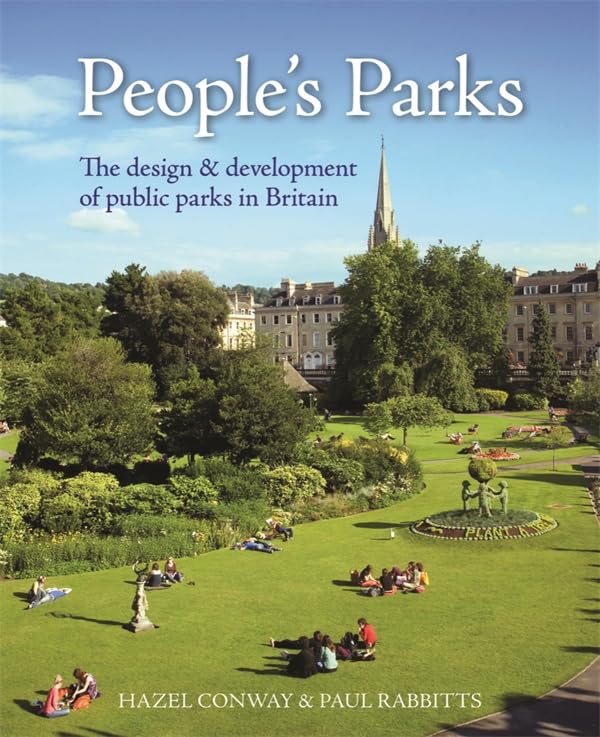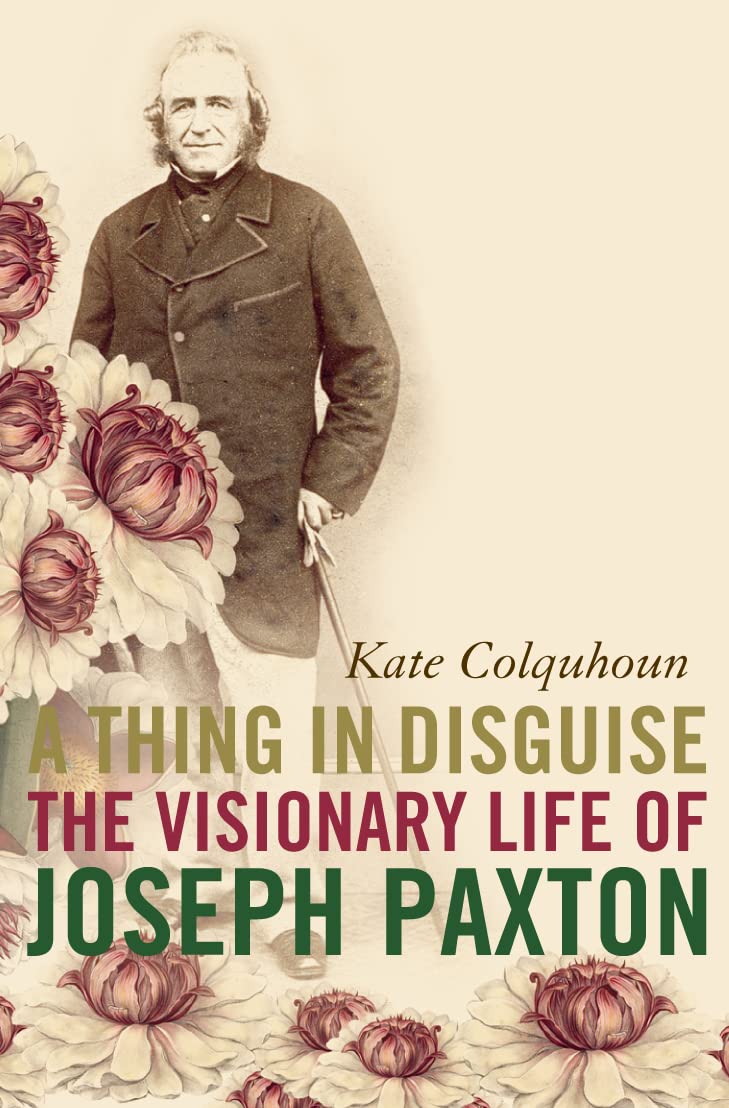Books, Articles & Journals

City Parks: A stroll around the world's most beautiful public spacesChristopher Beanland
A visually stunning and beautifully written celebration of park life around the world.
Parks are an absolutely essential part of modern life. From the author who brought you Lido, here are 50 of the world’s greatest parks – but not just a list of the examples we already know. Yes, we’ll tell you about those storied greats such as Central Park in New York and Phoenix Park in Dublin, but we’ll also take you to the Philippines, to Australia, to provincial Britain and around the world to show you the most historic and the most interesting, the newest and most cutting-edge that mix the best of nature and architecture. We’ll explore what you can find there, who goes there, why they are important, and how parks respond to their environments, including ones over a road, on old rail lines or in Berlin’s former airport.
Examples include:
• Freeway Park, Seattle, USA: a bizarre and brilliant brutalist park over a motorway.
• Ibirapuera Park, São Paulo, Brazil: this one contains amazing galleries and theatres.
• Holyrood Park, Edinburgh, UK: mountains within a city.
• Adelaide’s parks, Australia: unique in that the entire city centre is enclosed by parks.
and many, many more.
Illustrated with glorious photographs throughout, this book is a fascinating record of the world’s most interesting and innovative parks, and the people who use them – you’ll want to visit them all.

Rethinking Urban Parks: Public Space and Cultural DiversitySetha Low, Dana Taplin, Suzanne Scheld
Urban parks such as New York City’s Central Park provide vital public spaces where city dwellers of all races and classes can mingle safely while enjoying a variety of recreations. By coming together in these relaxed settings, different groups become comfortable with each other, thereby strengthening their communities and the democratic fabric of society. But just the opposite happens when, by design or in ignorance, parks are made inhospitable to certain groups of people.
This pathfinding book argues that cultural diversity should be a key goal in designing and maintaining urban parks. Using case studies of New York City’s Prospect Park, Orchard Beach in Pelham Bay Park, and Jacob Riis Park in the Gateway National Recreation Area, as well as New York’s Ellis Island Bridge Proposal and Philadelphia’s Independence National Historical Park, the authors identify specific ways to promote, maintain, and manage cultural diversity in urban parks. They also uncover the factors that can limit park use, including historical interpretive materials that ignore the contributions of different ethnic groups, high entrance or access fees, park usage rules that restrict ethnic activities, and park “restorations” that focus only on historical or aesthetic values. With the wealth of data in this book, urban planners, park professionals, and all concerned citizens will have the tools to create and maintain public parks that serve the needs and interests of all the public.

Public Parks: The Key to Livable CommunitesAlexander Garvin
Huge budgets are spent on restoring and creating new parks. Planner Alexander Garvin explains the rationales for their existence, the forms they take, their value, ways to pay for and govern them and the ingredients that make successful parks, providing the first single definitive source of wisdom about them. The book includes everything that landscape architects, architects, planners, civic officials and citizen activists need to know about the critical role of public parks.

The Regeneration of Public ParksKen Fieldhouse, Jan Woudstra
The Urban Parks Programme, financed by the Heritage Lottery Fund, has sparked a new enthusiasm for the regeneration of Britain’s parks. This unique reference book gives a valuable overview of all the elements of public park design. It emphasizes our parks’ diversity and richness, and offers practical guidance as to their renovation and future care. It is essential reading for all those involved in the design, upkeep and regeneration of public parks.

People's Parks - The Design and Development of Public Parks in BritainHazel Conway, Paul Rabbitts
People’s Parks – The Design and Development of Public Parks in Britain’ identifies the principal national and international influences on park development from the nineteenth century until the present, including their historical and cultural significance. Municipal parks made an important contribution to our urban environment, and they developed within a social, economic and political context which affected people’s attitudes to recreation – what became known as ‘rational recreation’. The promoters of parks wanted to encourage education and particular forms of recreation, and parks reflected this in their design, buildings, statues, bandstands and planting. This book is a thorough update and re-evaluation on Hazel Conway’s influential book, published in 1991, adding and evaluating an extra 100 years of history, through the Victorian era, to the war years, the impact of the Garden Cities movement, and the great decline of parks from the 1970s onwards. The impact of the Heritage Lottery Fund’s urban parks programme from the 1990s is covered, along with that of austerity and the Covid pandemic. The book concludes by evaluating the role of parks today and potential for the future.

High Line: The Inside Story of New York City's Park in the SkyJoshua David, Robert Hammond
How two New Yorkers led the transformation of a derelict elevated railway into a grand–and beloved–open space The High Line, a new park atop an ele-vated rail structure on Manhattan’s West Side, is among the most innovative urban reclamation projects in memory. The story of how it came to be is a remarkable one: two young citizens with no prior experience in planning and development collaborated with their neighbors, elected officials, artists, local business owners, and leaders of burgeoning movements in horticulture and landscape architecture to create a park celebrated worldwide as a model for creatively designed, socially vibrant, ecologically sound public space. Joshua David and Robert Hammond met in 1999 at a community board meeting to consider the fate of the High Line. Built in the 1930s, it carried freight trains to the West Side when the area was defined by factories and warehouses. But when trains were replaced by truck transport, the High Line became obsolete. By century’s end it was a rusty, forbidding ruin. Plants grew between the tracks, giving it a wild and striking beauty. David and Hammond loved the ruin and saw in it an opportunity to create a new way to experience their city. Over ten years, they did so. In this candid and inspiring book– lavishly illustrated–they tell how they relied on skill, luck, and good timing: a crucial court ruling, an inspiring design contest, the enthusiasm of Mayor Bloomberg, the concern for urban planning issues following 9/11. Now the High Line–a half-mile expanse of plants, paths, staircases, and framed vistas–runs through a transformed West Side and reminds us that extraordinary things are possible when creative people work together for the common good.

Why Cities Need Large Parks Richard Murray
The large parks and green infrastructure presented here illustrate the diverse uses and many benefits of large urban parks across 30 major cities. Demand for large urban parks emerged at the height of the First Industrial Revolution in the mid-1800s, when large urban parks represented new ideas of accessible public spaces, often established on land previously owned by aristocracy, royalty or the army. They represented new ideas on how city life could be improved and how large green spaces could enhance urban citizens’ physical and psychological well-being (e.g. Birkenhead Park in Liverpool, Bois de Boulogne in Paris, Tiergarten in Berlin and Central Park in New York City). Today, large urban parks are habitats for biodiversity and spaces of climate change adaptation. For people living in cities, this biodiversity may represent high cultural, recreational and aesthetic values, but is also important for other aspects of health and well-being, for example by reducing the urban heat island effect, air pollution and risks of flooding. At a time when we are seriously reconsidering how we live in cities and our urban quality of life, while also grappling with serious challenges of climate change, the authors of this book detail the much-needed evidence, pathways and vision for a future of more liveable, resilient cities where large urban parks are at the core. This book will help park managers, NGOs, landscape architects and city planners to develop the green city of the future.

A Thing in Disguise: The Visionary Life of Joseph PaxtonKate Colquhoun
A brilliantly conceived biography of Joseph Paxton, horticulturist to the Duke & Duchess of Devonshire at Chatsworth, architect of the Crystal Palace at the Great Exhibition of 1851 and one of the greatest unsung heroes of the Victorian Age
In the nineteenth century, which witnessed a revolution in horticulture and urban planning and architecture, Joseph Paxton, a man with no formal education, strode like a colossus. Head gardener at Chatsworth by the age of twenty-three, and encouraged by the sixth Duke of Devonshire whose patronage soon flourished into the defining friendship of his life, Paxton set about transforming this Derbyshire estate into the greatest garden in England. Visitors there were astonished by the enormous glasshouses and ambitious waterworks he built, the collection of orchids, the largest in all England, the dwarf bananas and the gargantuan lily, the trees and plants brought back from all over the world. Queen Victoria came to marvel and, increasingly, with the development of the railway in which Paxton was also involved, daytrippers from all over the country.
It was the Crystal Palace, home of the Great Exhibition in 1851, that secured Paxton’s fame. His design, initially doodled on a piece of blotting paper, was the architectural triumph of its time. Two thousand men worked for eight months to complete it. It was six times the size of St Paul’s Cathedral, enclosed a space of 18 acres, and entertained six million visitors. By the time of his death fourteen years later, ‘the busiest man in England’ according to Dickens, was friends with Brunel and Stevenson and in constant demand to design public parks and gardens. His last, seemingly most eccentric project was for a Great Boulevard under glass, a crystal arcade that would connect all the main railway termini in London.
Drawing on exclusive access to Paxton’s personal letters, Kate Colquhouns’s remarkable biography is a compelling story of a man who typifies the Victorian ideal of self-improvement and a touching portrait of one of that era’s great heroes.

The Outdoor Citizen - Get Out, Give Back, Get ActiveJohn Judge
From the president and CEO of the Appalachian Mountain Club comes an astounding comprehensive plan to save our planet, make the outdoors the epicenter of our communities, and commit to an active outdoor lifestyle.
In The Outdoor Citizen, John Judge coins the term “Outdoor Citizen” as he delivers an urgent call to action and a remarkably persuasive argument for why we must all become citizens of the natural world, reconnecting with life’s most essential foundation, nature, and defending it, embracing it, and advocating for it.
Judge, an international leader in conservation stewardship, covers such topics as how to turn our cities into Outdoor Cities, with a wide range of green spaces, outdoor recreation activities, eco-friendly transportation, and sustainable food sources; how to globally transition to green energy sources; what environmental policies must be implemented and how to enact them; and how to fund a sustainable economy.
At a time when we are facing an unprecedented climate crisis, the continued use of carbon emissions will lead to devastating, irreversible effects on the earth. This unique and riveting volume, brimming with expert advice and case studies, is unparalleled—a game-changer for saving our planet and an entry point into a world of healthier and happier people.

England's Gardens: A Modern HistoryStephen Parker
We may all feel we know what an “English” garden is, but do we really? England’s Gardens offers a holistic, modern-day tour and an update on the history of some of the most iconic, enduring, and influential gardens across the country.
A fresh take on a much-loved subject, this book will help you get to know England’s gardens up close and personal. Garden historian Stephen Parker leads you through England’s horticultural history, unearthing the cultural context and hidden stories behind the gardens, and bringing lesser-known garden makers to the fore. In five detailed historical chapters, Parker explores the making of the so-called “English” garden – from its origins in the formal splendour of stately homes, all the way to climate-change resilience and future-facing designs of the modern era.
Inside the pages of this stunning book on England’s country gardens, you will find:
– 5 chapters of detailed narrative essays arranged in chronological order.
– Detailed profiles showcase significant garden makers.
– More than 20 photography-led garden case studies explore key gardens to visit in England today.
– Stunning, full-bleed, contemporary photography brings the gardens to life.
– Archival photography and historical art sheds light on the history and making of the gardens.
Discover the best gardens to visit today – with garden case studies showcasing everything England’s gardens have to offer through stunning contemporary photography and careful analysis of planting schemes and garden makers’ creative influences. From iconic sites like Sissinghurst and Great Dixter, to more unusual examples such as Prospect Cottage and The Laskett – this book celebrates England’s gardens in all their glorious diversity, sublime beauty, and exuberant eccentricity.

Park Life - Around the World in 50 ParksTom Chesshyre
If the pandemic has taught us one thing, it’s that people love parks
As horizons shrank, we took stock. At first, a sense of panic set in: nowhere to go, nothing to do…
Then we all went to the park, and we realized something: we need greenery – we crave it.
Whether we’re in Colombia or Korea, America or Australia, urban parks are places where we can find calm amid the chaos. They can also (more often than we may realize) conceal intriguing hidden histories, and can tell us something about modern life in our frenzied world, too.
With fondness and humour, travel writer Tom Chesshyre recalls 50 of his favourite urban parks from across the world, in a love letter to the green escapes that bring us joy in our cities.

Bandstands - Pavilions for Music, Entertainment and LeisurePaul Rabbitts
(our chair makes no apologies for including this book here)
In 1833, the Select Committee for Public Walks was introduced so that `the provision of parks would lead to a better use of Sundays and the replacement of the debasing pleasures.’ Music was seen as an important moral influence and `musical cultivation … the safest and surest method of popular culture’, and it was the eventual introduction of the bandstand which became a significant aspect of the reforming potential of public parks. However, the move from the bull baiting of `Merrie England’ to the ordered recreation provided by bandstands has never been fully comprehended. Likewise, the extent of changes in leisure and public entertainment and the impact of music at seaside resorts often revolved around the use of seaside bandstands, with the subsequent growth of coastal resorts. Music in public spaces, and the history and heritage of the bandstand has largely been ignored. Yet in their heyday, there were over 1,500 bandstands in the country, in public parks, on piers and seaside promenades attracting the likes of crowds of over 10,000 in the Arboretum in Lincoln, to regular weekday and weekend concerts in most of London’s parks up until the beginning of the Second World War. Little is really known about them, from their evolution as `orchestras’ in the early Pleasure Gardens, the music played within them, to their intricate and ornate ironwork or art deco designs and the impact of the great foundries, their worldwide influence, to the great decline post Second World War and subsequent revival in the late 1990s. This book tells the story of these pavilions made for music, and their history, decline and revival.

Birkenhead Park - The People's Garden and an English MasterpieceRobert Lee
When it was officially opened on Easter Monday, 5th April 1847, Birkenhead park became the first municipally funded park in Britain. It was a pioneer in the development of urban public parks, designed for use by everyone, irrespective of social class, ethnicity or age. In terms of town planning, it demonstrated the importance of including green infrastructure in urban development as a vital contribution to public health and wellbeing. Paxton’s design for the park was heralded as “a masterpiece of human creative genius” it served as a vehicle for the global transmission of the English landscape school and led to the creation of numerous public parks everywhere, most famously Central Park, New York, incorporating of many of Paxton’s design features.
This book addresses a long-standing gap in the Park’s historiography. Regarded as “one of the greatest wonders of the age”, it is an important contribution to nineteenth-century landscape history with a local focus, but of international significance. But it seeks to interpret the Park’s development until 1914 within a political and cultural context, drawing on economic and social history, as a means of explaining why it was not until the late-nineteenth century that it finally became a focal point for recreation and public health.




